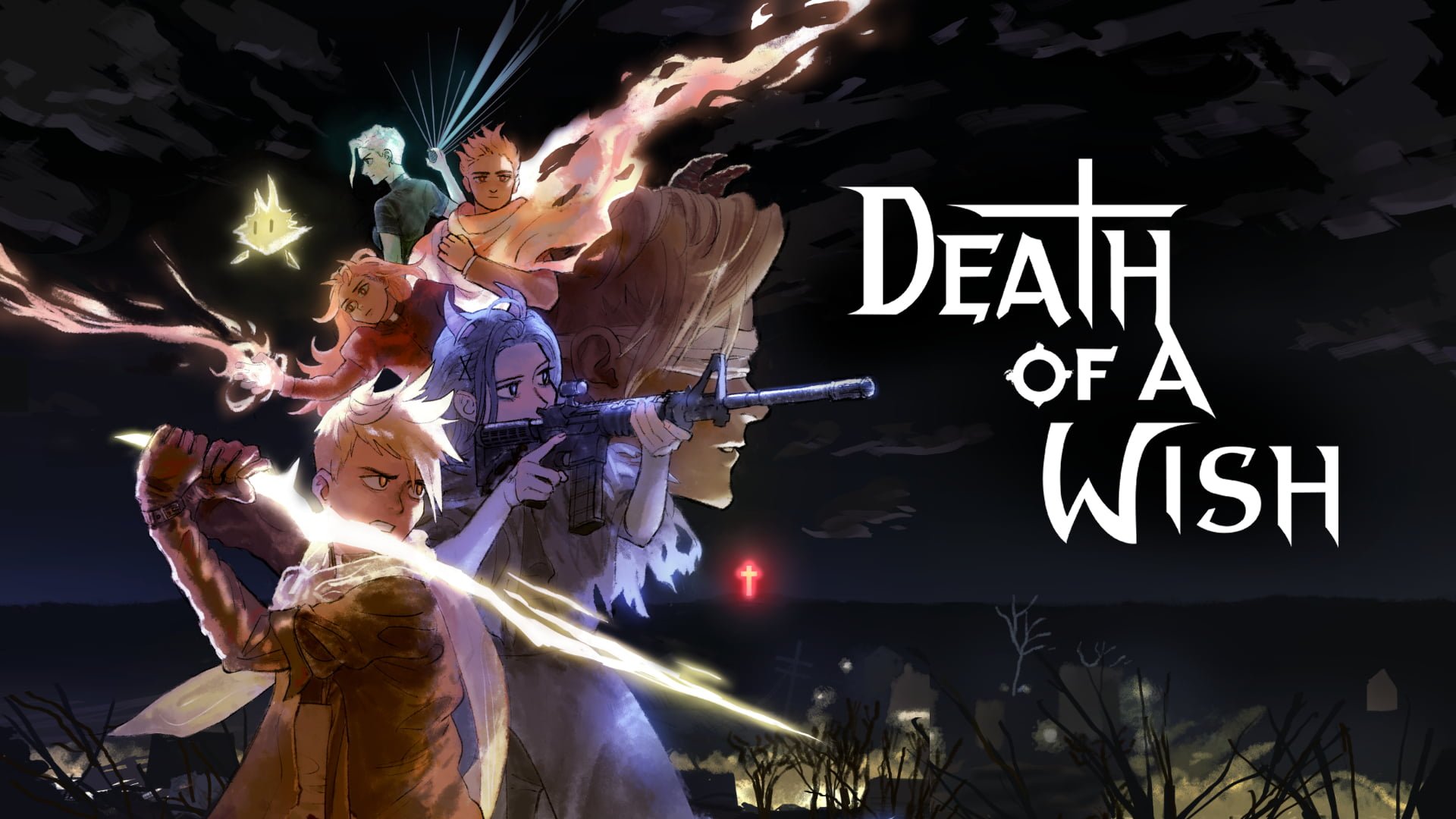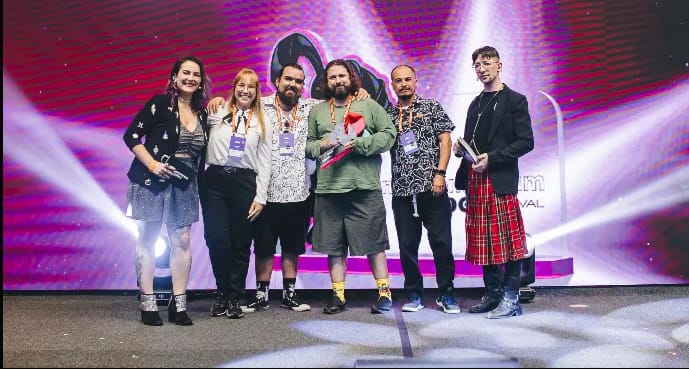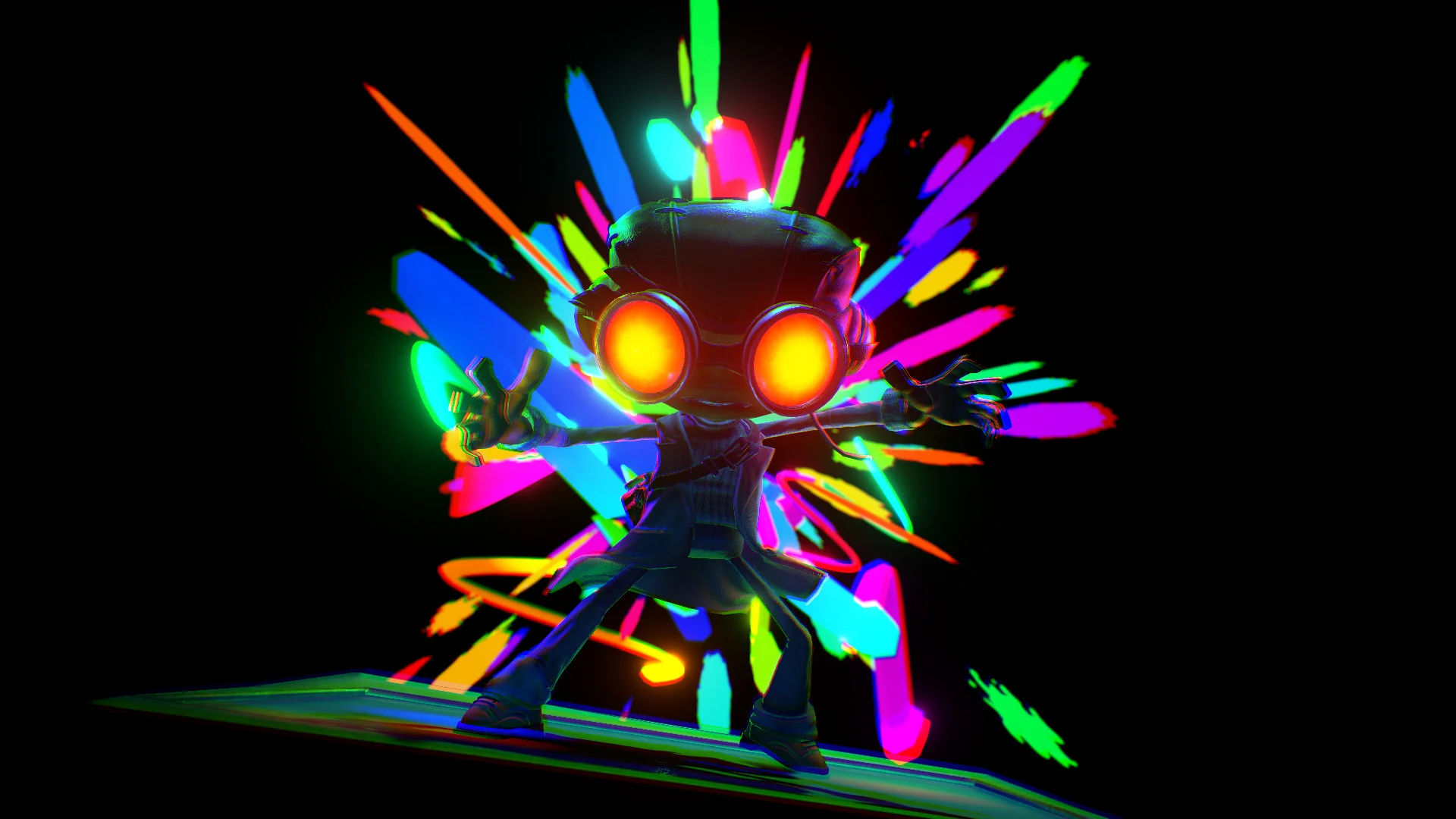Death of a Wish was one of the games I was most excited to check out at PAX. Lucah: Born of a Dream was easily one of my favorites from 2018 and I still reserve it is one of the best action games of the past decade. A chance to play a new build of its sequel was too good to pass up. You can see my impressions here (I’m very excited to play more).
Also had a chance to chat with Colin Horgan, one of the developers, about the game and a few other topics. Specifically how the change to a more aggressive style of combat came to be, the recent trend of stagger meters in action games, and what makes a good parry. Didn’t intend to record a long interview, but once we started chatting it just kinda… kept going. It was a really good conversation! Refreshing to talk to someone with an active interest in these subjects.
Entertainium: What was the intent behind emphasizing the rewinds over the heals from the previous game?
Colin Horgan: Yeah, so I feel like in Lucah, we introduced the rewind as sort of a push to the player to focus on doing the fighting better rather than trying to like, you know — tank through a fight that’s going bad with the recovers and stuff. And that didn’t really happen the way we were expecting, especially because the heals were too good. They were too easy to come by — because they recharge with the rewind — and even though we gave you more rewinds than health stuff, people would just switch to the health item and just never switch back.
So with this one, instead of taking it as like a “oh, maybe we should only have healing items,” we said “let’s rethink how the economy of this works.” And I really wanted to focus on the rewind because, again — I think a big part of these games is, and what they’re trying to instill in the player, is we’re pushing you to do better, to play better, to play more beautifully. And that’s not going to happen if, again, you’re taking hits and can just tank it.
So we didn’t want to take healing out entirely — because that would be cruel, I think. But we wanted to make it a little harder, and you had to put a little more into it and have a little more weight behind the decision of “do I heal?” or “do I just rewind?” So as you saw, the heals do not regenerate on death or when you go to a checkpoint, and you have to find them throughout the world. That adds more weight to the decision. You can’t just switch over to the heals and stay there.

The heals become a lot more powerful that way because it’s a more free resource than the health is. We also give a lot more rewinds from the start than we did before to further encourage, you know — like I think in the first game you start with three and you get that kinda conservation feeling — instinct — so… we used that to our advantage. We give you more rewinds, but make you want to conserve the heals. The heals are — when you use them it’s permanent, so you have to really feel like “I think I can beat this boss” and use the heal instead of the rewind.
And then a fun side-effect of turning it into a thing you find in the environment is it gives us more to do in the level design. People like exploring and finding things. And now that we have a consumable resource you can find, we can hide it in little pockets of the world and encourage exploration and reward people who do do that (or do some extra combats or something). And I think it makes for a richer game world in the end, so it actually had some benefits beyond just informing how people approach the combat.
Entertainium: Is the increased challenge also a result of where the story seems to be going? Because I know where Lucah left off, Christian was in a… pretty rough spot, to put it plainly.
Colin: Right. So a couple things with that one, right.
So one of the big changes you commented on while playing was there’s no more stamina. It’s not a souls-like anymore! According to people.
Entertainium: Just a raw action game now.
Colin: Right. It’s something that was kind of intentional with Lucah is like, as the game progressed, it became less souls-like and more character action, and we wanted to pick up where it left off there. Especially because — kind of a running joke I have in my head — is that because Christian was an enemy in the last game, essentially, he operated on different rules. One of which was he doesn’t have stamina, so it’s like he doesn’t have stamina in this game because he didn’t in the first game. And also he has a broader moveset than Lucah did. A lot of these aspects of him kind of inform the combat design and the switch to a more aggressive, pure action game.
I think that also reflects in his character. Christian was very angry but also kinda lost in the first game. In this game he has a purpose and a drive now. Still angry, still very emotionally driven, but out for revenge essentially; has a purpose.
Entertainium: Actually putting that anger toward something instead of just simmering like he was before.
Colin: Yeah, exactly.
But because of that, the action needed to adjust to compensate. We couldn’t just do the same style of enemy and encounter design that we did in the first game because Christian would crush them, right? Most enemies in the first game have one or two moves, maybe, that they do, and then they give you a lot of time to retaliate because you have to account for the stamina system.
In this one you can essentially dodge infinitely, you can attack infinitely, so the enemies need to keep you on your toes in other ways. So often even the most basic enemy has attack chains rather than one attack. We introduced a more explicit guard system in the game that the enemies have. So you saw the yellow bar we call the “guard meter” that they have, that you need to whittle down in order to get them into the right state rather than in Lucah — just a single parry would get them into that state.
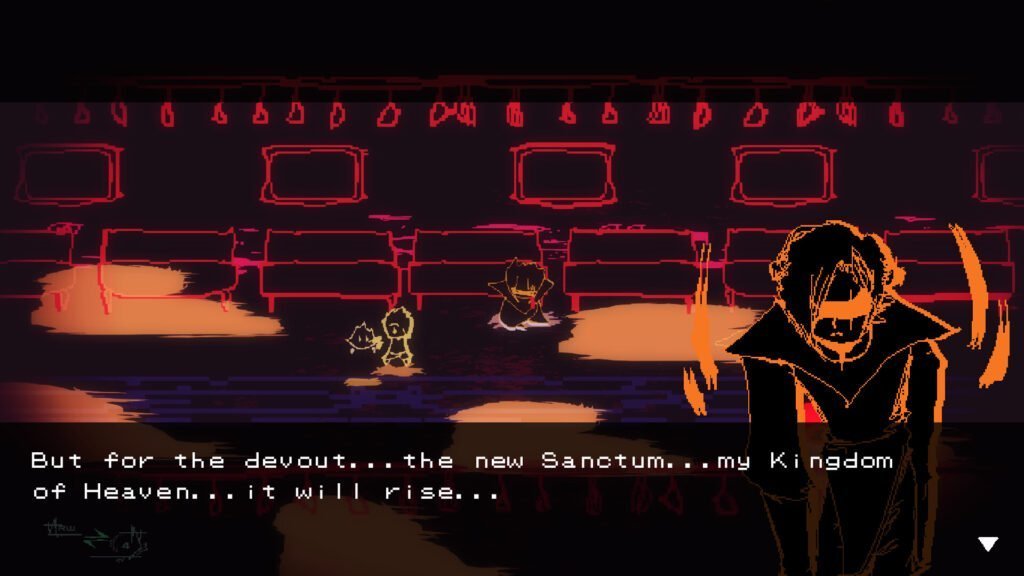
So they can tank your attacks a lot better than they could in the first game. So it’s more of like a dance in this one, where you can do a lot to the enemies, but they can do a lot back to you. And you need to find the moments where you can push your aggression and you need the moments where you need to sit back and dodge or parry, because the enemy isn’t easy to break — or they’re not giving you the window to retaliate.
I think that does make it a little more different in some ways. There’s less obvious optimal strategies in this one than there were in the first one, but I think that’s a good thing. I think it’s gonna make for a richer action experience than the first game was — which I still think was pretty good.
Entertainium: Oh, it was good, yeah!
Colin: Yeah, yeah, but we could do better. And if we can also work along with the narrative that we’re constructing here where it’s a lot more direct — it’s a lot angrier. Lucah was a lot more introspective. It was about, you know, “how do I exist in a world that oppresses oneself.” And then Christian’s like, “okay, but what are we gonna do about it?” And I think the changes to the difficulty and combat work really well in selling that story.
Entertainium: It definitely feels like it’s… in the combat it feels a lot more, like — that aggression comes through just because of how both you don’t have the stamina restrictions, but also just feels like the enemies are more aggressive? I had to be a lot more attentive on when I tried to strike. I couldn’t just run in, do some attacks, and then back off. I had to be constantly aware of where they are: are they moving in, are they attacking from afar, or whatever. It feels more overwhelming, which feels right just given what’s going on.
Colin: It feels overwhelming, but I think one thing that you realize as you start to play the game — or at least I hope players will realize — is that you have the tools to contend with them. It’s just up to you to learn how to use them.
Entertainium: Will this game still have the same suite of accessibility features the last game did?
Colin: Yes! It has the exact same ones currently — with some other ones because I think one of them was adjusting the stamina meter, and because that doesn’t exist anymore, we have some other considerations. The control customization is a little more robust than it was in the first game. We have menu specific controls too, like using the d-pad for the menu. Just some nice quality of life things I think will help with that. And also the sin and punishment system remains from the first game, so you have two axis of difficulties with which to tune the experience.
Entertainium: I feel like that stuff, and the accessibility features, was one of things that made Lucah so impressive because it was a perfect example of a game that was souls-like enough, but still have a really good way to customize the experience — and still make it have the same impact. You hear people talk about how FromSoft can’t do that because “it’s gonna ruin the experience!” or some other ridiculous reason. But it’s like: look at this! You could do this!
Colin: You know, on that point: I can’t count the number of people I’ve seen who played the first game and started on easy mode with some of the modifiers on — like more health and things like that — who then went onto become speedrunners of the game. It’s like you just need that foot in the door and then people will work their way up if they want to.
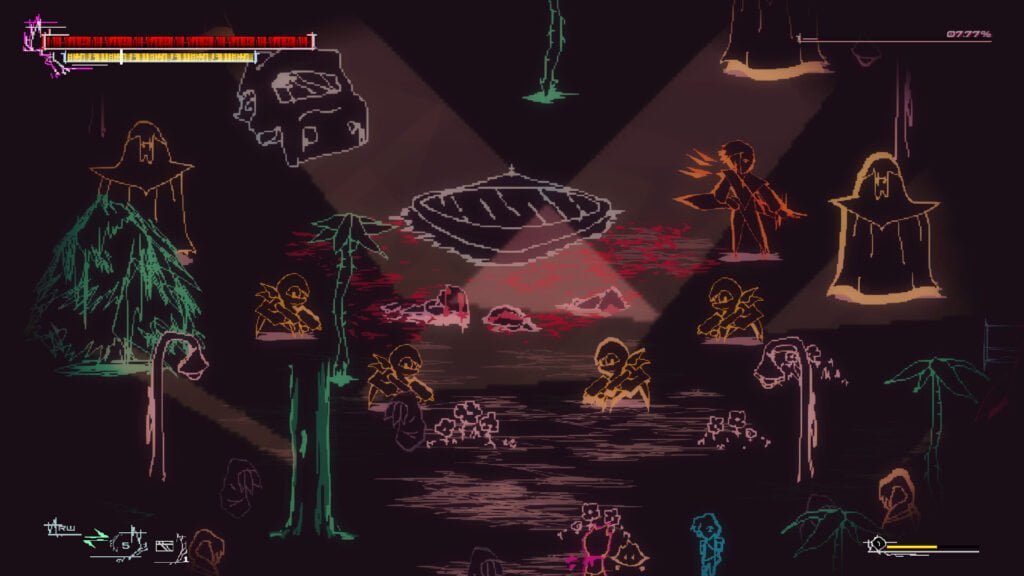
Entertainium: Yeah, exactly. Like… I feel like I’m pretty good at this, but there were times in Lucah I felt like, okay: I need to turn one or two things on because I am having trouble. And to have that option there so I can get through something under these conditions is so nice.
Colin: One thing I can’t promise yet, but is in the works with this game currently, is on the exact opposite end. We’re introducing some challenge modifiers to the game for people who have completed the game once. And also for people coming from Lucah and maybe want an even more challenging experience because they’ve already gotten more of it. And also because… it’s kinda funny, I feel like I see a lot of that sort of engagement with games in that way more and more these past couple of years where people do like challenge runs or–
*An announcement from the venue cuts in; we pause until it’s over*
Okay, so — people doing challenge runs of games that they like, where it’s like, “I’m gonna play Dark Souls but only use the firebombs” or whatever. And I think that’s really interesting because one of things that inspired the original Lucah was playing Bayonetta trying to get all the pure platinums, which is a very strict. Like, you need to take no damage, and do it in a certain amount of time — the way the style system works in this game, basically. And there’s no reward for doing it that way, besides just an intrinsic “I did this challenge I set for myself.” And I kinda want to support that in this game too because I feel like it would work really well. So some ones I have planned is playing the game without being able to level up or only using the starting weapons. That sort of stuff.
We had a bit of that in the first game because there was a challenge difficulty where every hit was lethal and things like that. I don’t think we’ll do that with the difficulties again, but I want to add this extra layer for the people who want to go after it.
Entertainium: Was there any points of inspiration for Death of a Wish in terms of either systems or narratively?
Colin: Yeah, so we’re working off of a lot of the same sorts of stuff with Lucah, but I think something that’s very different about this game… first of all it’s five years later, after the release of the game. I think everyone who’s on the team and making the game, we’ve all gone off and made other projects and come back. The game I worked on before this was Extreme Meatpunks Forever: Season 2.
Enteratinium: Excellent game.
Colin: Oh yeah, I’m quite happy with that one. I think a lot of my experience on that one influenced how Death of a Wish is coming out. It’s narratively a lot more straightforward than Lucah was, and I think part of that was just being inspired by Heather Flowers’ style — and how angry and righteous that game was. I wanted to bring that over to Death of a Wish. Certainly also a lot of things happening in the real world, especially in the United States that maybe inspire a similar sort of fervor.
I think Christian as a character in this game is maybe an outlet for a lot of feelings that like-minded people, like the people who are making this game, might be having about how things are going. Especially in regards to legislation around trans identities, women’s bodies, like that sort of thing. So there’s a lot of that sort of righteousness in this game than there was in the first game. It’s a lot more outward facing than inward facing. But using the same sort of mechanical bed that the first game had.
Also I played Sekiro. [Laughs] I think there’s a little bit of that in there too.

Entertainium: I was gonna ask — did you play Sekiro? Because when I realized the bars were connected to the parries I thought, “oh, okay.”
Colin: Right, yeah. You know, it’s funny — Lucah, the parry ended up being a little too good. Even though we were trying to tune it to be like, oh this will be a game that will teach people how to parry in these kind of games. And then what ended up happening was people realized how good it was, and the optimal strategy became wait for the enemy to attack, parry, go in. So one thing that Sekiro did that I thought was kinda brilliant is like, well we’re gonna make it all about the clashing of the swords. It’s not just one parry you get to go in, it’s learn the moves, deflect the attacks, and then go in. It’s very cinematic in that way.
And I thought, “oh, what a great way to balance the parry.” So yeah, in this game there’s a guard meter that attacks and parries both damage. And what means is we can tune the enemy attacks so that parrying one doesn’t necessarily put them in the break state, where they’re vulnerable and take more damage and all that stuff. Sekiro came out the year Lucah came out and it’s like, “oh, what a great idea!”
Entertainium: Have you played Armored Core VI yet? It has an interesting evolution of what Sekiro was doing in that you have a stagger meter you’re building that — basically works the same way the deathblows in Sekiro do, but instead it’s there as a way to do burst damage. Like, knock them down and you just unload on them.
Colin: Right. I mean — funnily enough, I think watching you fighting the boss of this demo is a similar sort of thing where it’s like — building up, and then once they broke, it’s like “all right, it’s time to whale.”
Entertainium: Yeah, and that’s why I brought it up. It felt like… almost a similar thing. And I’ve seen a lot of games doing that. Final Fantasy has done it before with its own stagger system, which — it does more as a sort of puzzle than an action game would, but… I’ve just noticed a trend, and I’m curious to see how it came to be and why it is. And it’s not bad! I like it! It’s satisfying to do. But it’s interesting to see how many different games are all converging on this one point.
Colin: Yeah, we’ve noticed that too. We’ve been thinking about writing a little something about it, because it’s becoming more and more popular, especially in action games. Though yeah, I think the first time I remember seeing it was in Final Fantasy XIII, which as you mentioned was a role-playing game. But I think what’s exciting about it is it both gives you something to focus on besides dealing as much damage as possible, which can be a little monotonous over a long time. But it also introduces an inherent climatic arc to a fight, right? You’re building up to these big moments — the stagger or the break or whatever the game might call it — and then you get to style on them. Then maybe they recover — or you win or whatever — and it resets, but it creates a narrative tension to the fights that maybe isn’t necessarily there if it was just straight, like: they attack me, I attack them, over and over.
Entertainium: It adds a bit more… it’s like a better way of making defensive play a bit more interesting because it’s not just you’re doing whatever the safest strategy is to take the enemy down. You’re trying to actually engage on every possible front to get whatever advantage you can. Like with the bosses in the demo, I could try to whittle them down and keep my distance, but this is going to take forever otherwise. If I go in and try to parry as much attacks as I can, I’m putting myself at heavy risk for doing so, but I’m breaking the guard meter so fast that I can actually get in and safely get my damage in.
Colin: Right. Someone was playing the game earlier today and they had an “aha!” moment when they were fighting the tutorial boss, where they were staying back and kinda like, “oh, this guy’s a little scary. Maybe I should stay back.” But then they just happened to get three parries in a row and the boss entered the break state and they got rid of half their health, and they were like “oh my god! I just need to find these opportunities to do parry parry parry and I got it.” And that’s, I think, much more exciting than people trying to find the optimal strategy that maybe is a little cheesy or not very engaging.
And something else — it adds a new complexity to the design that you can play with too. You can have some enemies that maybe are more resistant to the breaking and need to find other ways to deal with them. And maybe there are some that are weak to parrying, or there’s some that don’t give you any options to parry and you need to, you know — figure something else out. And I hope people discover that, especially when they play the full game because it will start to evolve as they go through it.
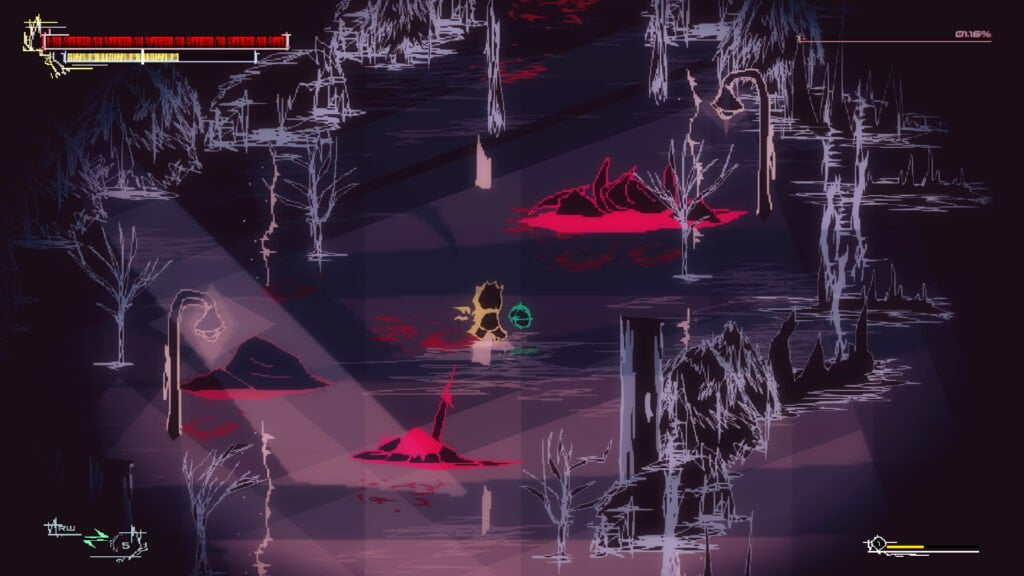
Entertainium: What do you think makes a good parry?
Colin: What makes a good parry… it’s gotta be very clear when you do it correctly. A lot of people talk about the Dark Souls parry as a hotly debated “how does this feel?” because — one thing I find very frustrating about that one is sometimes it kinda half does something and it just reduces the amount of damage you take, but the enemy attack still goes through. It’s not very clear what you did wrong or what you did right. And sometimes when you do do it right, the timing feels totally weird. It’s like, “oh I didn’t expect to get that.”
I think it’s gotta feel almost natural in a way, as weird as that sounds, and the way I define that is: I think it should make sense when you put the input in and what you see on the screen. It’s kinda funny we talked about Sekiro earlier because it comes from the Dark Souls DNA, but I feel like they actually figured it out on that one, where like… They introduce a very specific deflect state where it’s like, not only did you guard the enemy’s attack, but you did it perfectly — and there’s a different set of sparks that show up, it does more stance damage, all that stuff. Maybe that’s not the stuff that people will notice in the moment to moment, but they will notice the sound effect and the sparks, and it made sense because I pressed the block button right as the attack was coming and the enemy reacted in a way where the sword bounced off my sword or wherever.
And something we tried to do with this game — you know we don’t have the budget of Sekiro, so we have to do some shortcuts like maybe have a word “parry” when you do a parry, you know? Like a damage number. But it helps! The last game didn’t have that — or at least didn’t have it in the same way. So if you can just convey when the player does it right and try to… you know, kinda hint at what they can do to do it if they failed in some way. Like in this game, because the parry is tied to the dodge, maybe they’ll dodge instead of parry, and it’s like, okay, I did it too late or too early. If I got hit, then I did it too late. That sort of thing. And I think reducing complexity as much as possible and increasing the feedback as much as possible, both for when you failed it and when you succeeded, is what makes a parry good.
Entertainium: I think making dodge and parry the same function helps because it adds a degree of safety. It’s not like — if I screw up in Dark Souls, I’m taking a huge hit and I’m like, well not gonna try that again. Whereas here if I missed it okay — I was too early but I still probably avoided the attack, so I’m still encouraged to keep trying because I’m not putting myself at a disadvantage by even attempting it.
Colin: Yeah, we tried to make it a little kinder than it is in other games, because, again — I think Lucah‘s the kind of game that got people into these kind of games, and I think that’s a good thing. Funny enough, Lucah’s parry was originally inspired by Metal Gear Rising‘s, where you use the attack button in the direction to do it. And it started that way in the game, but then I realized it just made people button mash more, because they’re already attacking, you know? So we wanted to differentiate it a little bit, so we changed it to the dodge, and I think that was the happy medium we needed.

